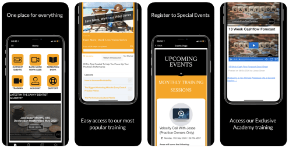Being a great dentist might help you run a successful practice, but in order to turn it into a lucrative and profitable business, you need to be a competent business owner too. And while an experienced accountant will greatly help with money management, there are some decisions that only you can make to get the money rolling in the right direction. I am talking about the often ignored cash flow.
Now a lot of dentists would be like, ‘those nitty gritty details I let my accountant handle,’ while others would be like, ‘yeah thanks Jesse, but I got my business cash flow covered.’ Whichever of these statements holds true for you, I am quite certain there are details down here that you would have overlooked. Let me summarize this article for you in one simple sentence so that you get a better idea of the what’s, why’s and how’s of our today’s topic- “CASH FLOW IS ARGUABLY THE MOST IMPORTANT ASPECT OF YOUR BUSINESS’S GROWTH.’
Okay, that might be a bit dramatic, but I just had to get it out there. Because it baffles and saddens me when I see dentists running their practices and even other business owners with professional business degrees overlooking the importance of cash flow. Now that I have the gravity of today’s topic covered let’s jump right into what cash flow is, how you should integrate or more aptly calculate it, and most importantly, how to maximize it for greater monetary returns.
What is Cash flow?
We really need to understand our business from a numbers perspective. And while many business owners boast about their ability to use their intuition and gut for making important money decisions for their business, it would really help if they could get into the hard numbers and have definite answers about the cash at hand. Because one thing is for sure- businesses don’t go crashing down because they are out of revenue, but because they run out of cash.
So what is cash flow? Cash flow comes from the use of assets in your business. Let’s break down these assets in dentistry. The physical assets would be the chairs, the hand pieces, the infrastructure, compressors and the likes. Your database assets would be your goodwill, or your patient base. Your HR assets would be your team and the number of staff that you have. You will also have the intellectual property assets like the systems, the processes, the structures and how things move in that direction.
Now as business owners, the objective is to turn those assets into generating sales; and then profit from those sales. And while the profit numbers might give you an idea of what’s going on in the business, it seldom indicates much about the viability, if it doesn’t address cash flow. So in the simplest of terms, cash flow is the cash a business has at hands to keep the business operational and profitable.
The idea is to convert profit into operating cash and then free cash flow. If you are the owner of your business, then you can distribute that free cash flow to you, as a dividend. Alternatively, you can use that free cash flow to reduce debt levels by paying down debt. You can also invest some of that cash flow in purchasing more assets.
A business’s efficiency is measured by its efficiency of converting assets to cash flow. So what you, as a business owner, need to remember is that a business’s efficiency relates to conversion of assets to cash flow.
The Five Levers of Cash flow
Now that you have a good understanding of what cash flow really is and how important it is for you to keep track of it, let’s delve into methods and strategies that will help you master and maximize it. There are five main components or levers for enhancing cash flow. I discuss them in detail here:
Generating Revenue
Arguably the most important lever is the ability to generate revenue. There are three sub levers for generating revenue; and for running a dental practice, they can be explained as follows:
Seeing More Patients
The most important of these is seeing more patients. This is interrelated with marketing, capacity, efficiency of scheduling and many other factors. But the bottom line is to maximize the number of patients walking in that door.
Frequency of Visits
Now this one might seem a little tricky. How do you ask your patients to see a dentist more often? The most ethical way to do that is by making sure your recall system is tight and you ensure complete treatment follow up.
Increase the Average Transaction Size
This, in common business language is called an upsell. You can increase the average transaction size by diagnosing correctly, by offering a full scope of services so that you don’t have to refer them elsewhere, billing appropriately and by avoiding unnecessary discounts.
Do remember that there is a very fine line between doing great business and doing it unethically and immorally. So do ensure that you don’t cross that line.

Minimize Your Expenditure
It is fundamentally important to minimize your expenditure. Now you are probably thinking, ‘but I only spend on inventory and costs that are absolutely necessary. I am sure you do. But what if I told you I can point out at least a few expenditures that can be avoided or cut down? How much do you generally spend on consumables? 10%, 8% or if you are really cutting down, then 6%? What if I told you we run at about 3.5% and still operate a thriving successful practice? A baseline should be no more than 7%. Run your eye over your expenses from time to time to see if you are getting a return on the investments that you are making. Just set a budget and let your team know that they have to manage within that budget.
One great tactic to ensuring you cut down on expenses is by opting for singularity. So for instance, avoid using three different composites, several different impression materials or four different bonding materials. Having a single method or system will ensure less upkeep and/or training cost.
Reduce Account Receivable Days
The last three levers are tied together as all three of them boil down to the balance sheet. The first one of these is reducing accounts receivable days. For many practices, this may not be an issue as they collect money on the day of the treatment. But there are some businesses that are running accounts or have got bad debts or extended payment terms because they aren’t getting money in fast enough. Having your money out can greatly impact your cash flow so you need to make sure that the receivables days are reduced to the minimum possible.
Reduce Inventory Days
Let’s take an example here. You are getting implants for a great discounted price if you buy in bulk. You jump on the opportunity and get loads of them, more than your practice uses in a given time frame. You are thinking, ‘at least I got cash sitting right there on my inventory shelf’ and I am thinking, ‘yes, but that cash could have been utilized for more important investments rather than just sitting there doing nothing.’ The point I am making is, you need to minimize your inventory days. We want to turn our stock over; we want to turn our consumables over. Making sure you’re getting quick turnaround in your lab jobs is another version of your inventory days. I see a lot of dental practices with unnecessarily huge inventories that are covered in cobwebs and products that expired long before they can even remember. That’s just wasted cash in my opinion.
Increase Payable Days
This is another tricky one; because it can get difficult to increase payable days ethically, morally and without breaching the said agreement. It is very important to have good relationships with your suppliers. But if the agreement states you should pay by the end of the month, then pay by the end of the month; take advantage of your payment terms to maximize cash flow.
Points to Ponder
So just to quickly sum it up. In order to maximize cash flow, you need to increase the revenue of the business, reduce your expenses, and get money in as quickly as possible and out as slowly yet ethically as possible.
P.S. Whenever you’re ready …. here are 4 ways I can help you grow your dental practice:
1. Grab a free chapter from my book “Retention – How to Plug the #1 Profit Leak in Your Dental Practice”
The book is the definitive guide to patient retention and how to use internal marketing to grow your practice – Click Here
2. Join the Savvy Dentist community and connect with dentists who are scaling their practice too
It’s our Facebook group where clever dentists learn to become commercially smart so that they have more patients, more profit and less stress. – Click Here
3. Attend a Practice Max Intensive live event
Our 2 day immersive events provide access to the latest entrepreneurial thinking and actionable strategies to drive your practice forward. You’ll leave with a game plan to take your results to the next level. If you’d like to join us, just send me a message with the word “Event and I’ll get you all the details! – Click here
4. Work with me and my team privately
If you’d like to work directly with me and my team to take your profit from 6 figures to 7 figures …. just send me a message with the word “Private”… tell me a little about your practice and what you would like to work on together, and I’ll get you all the details! – Click here







